
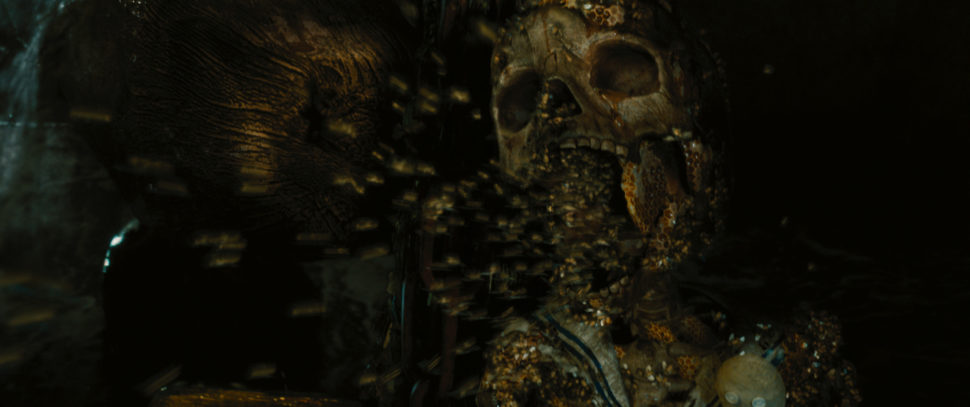
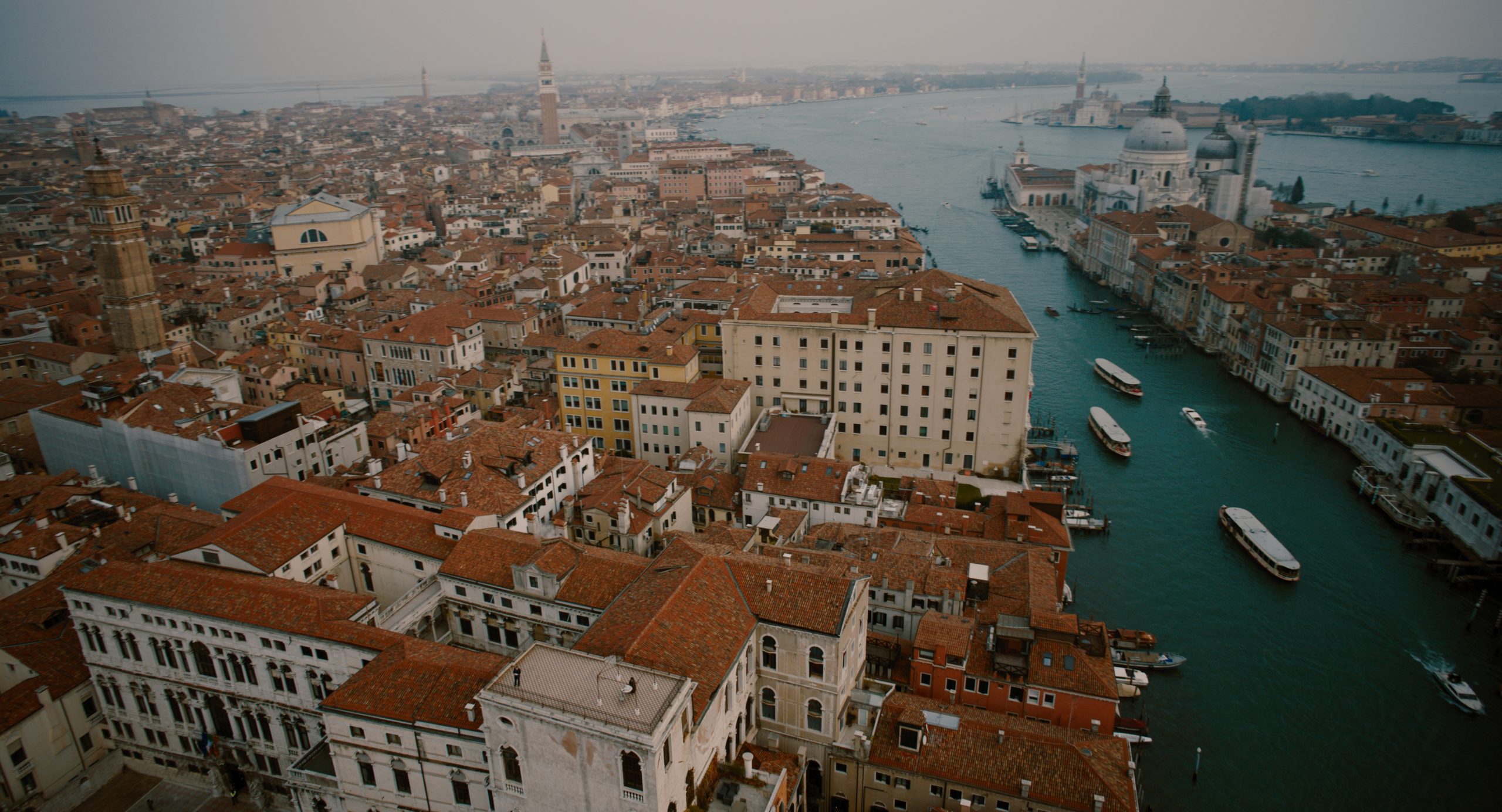
Step into the eerie world of “A Haunting in Venice,” where the boundaries between reality and the supernatural blur to create an atmosphere that will send shivers down your spine! Cinesite’s Artemis Oikonomopoulou was the production visual effects supervisor on this chilling tale, being involved from the early stages of prep and shooting, at Pinewood Studios and on location in Venice, all the way through to post. Internally, Suzie Askham was the VFX supervisor on site for Cinesite and made crucial contributions by overseeing and managing all aspects of the project’s visual effects and her team completed over 230 shots of the overall VFX work on the film.
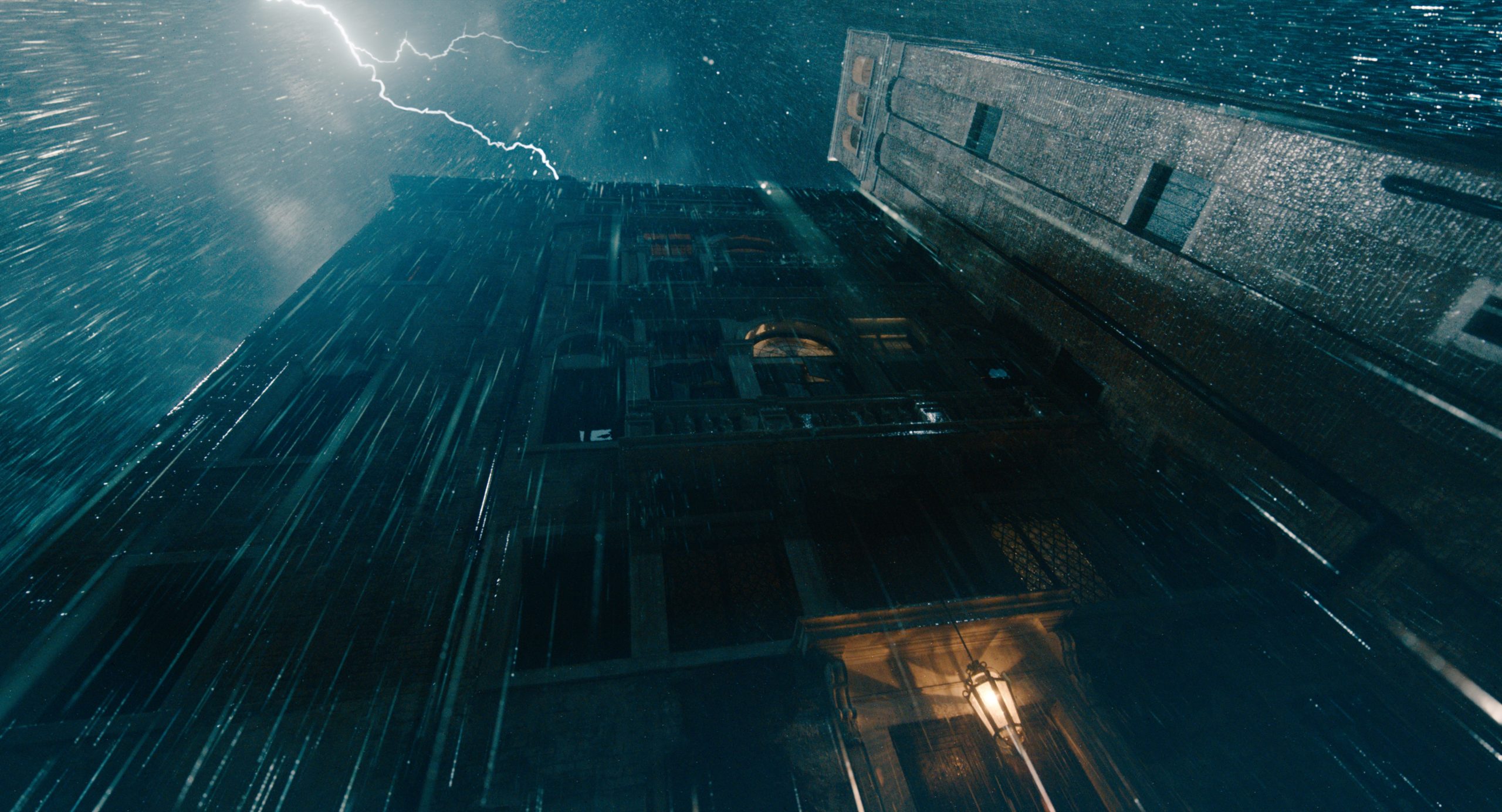
Rain and Mood
Fog, rain and the weather elements are a recurring motif in the movie. Throughout the story, Venice is shrouded in stormy weather, with rain pouring down in haunting torrents. The VFX team used a range of techniques, from 2D elements to 3D simulations, ensuring that each raindrop contributed to the palpable atmosphere.
“Most of the VFX work focused on exterior scenes, even though the storyline primarily unfolds inside a Venetian palazzo,” Artemis explains. “We needed to showcase the external surroundings, especially during a pivotal storm sequence. Cinesite played a crucial role in seamlessly integrating the palazzo into the Venice setting and enhancing the effects for the rain and storms.”
Creating Unforgettable Scenes in Venice’s Historic Setting
The project’s charm comes from whisking audiences to post-World War II Venice. Cinesite faced the tricky task of keeping the city’s history intact while removing modern distractions that could ruin the illusion. From modern buildings and construction to misplaced holiday decorations, the VFX team had a big clean up task.
One of Cinesite’s most cinematic moments occurs during the film’s climax—a breathtaking long shot of Venice captured by a drone. The journey begins on Poirot’s roof terrace, with the camera gracefully pulling back in a spiral above the city’s intricate streets and waterways.
The VFX team diligently restored historical building facades to preserve the post-World War II ambiance of the city, erasing modern elements, and meticulously clearing the bustling canals. The team also replaced a huge section of the plate with CG buildings to recreate Poirot’s house and surroundings. Artemis adds, “This shot was so important since it’s the final shot of the movie. It was particularly challenging as it spans over 3 minutes of screen time,” The epic final shot not only encapsulates Venice’s grandeur but is also a stunning final visual on which to complete the audience’s cinema experience.
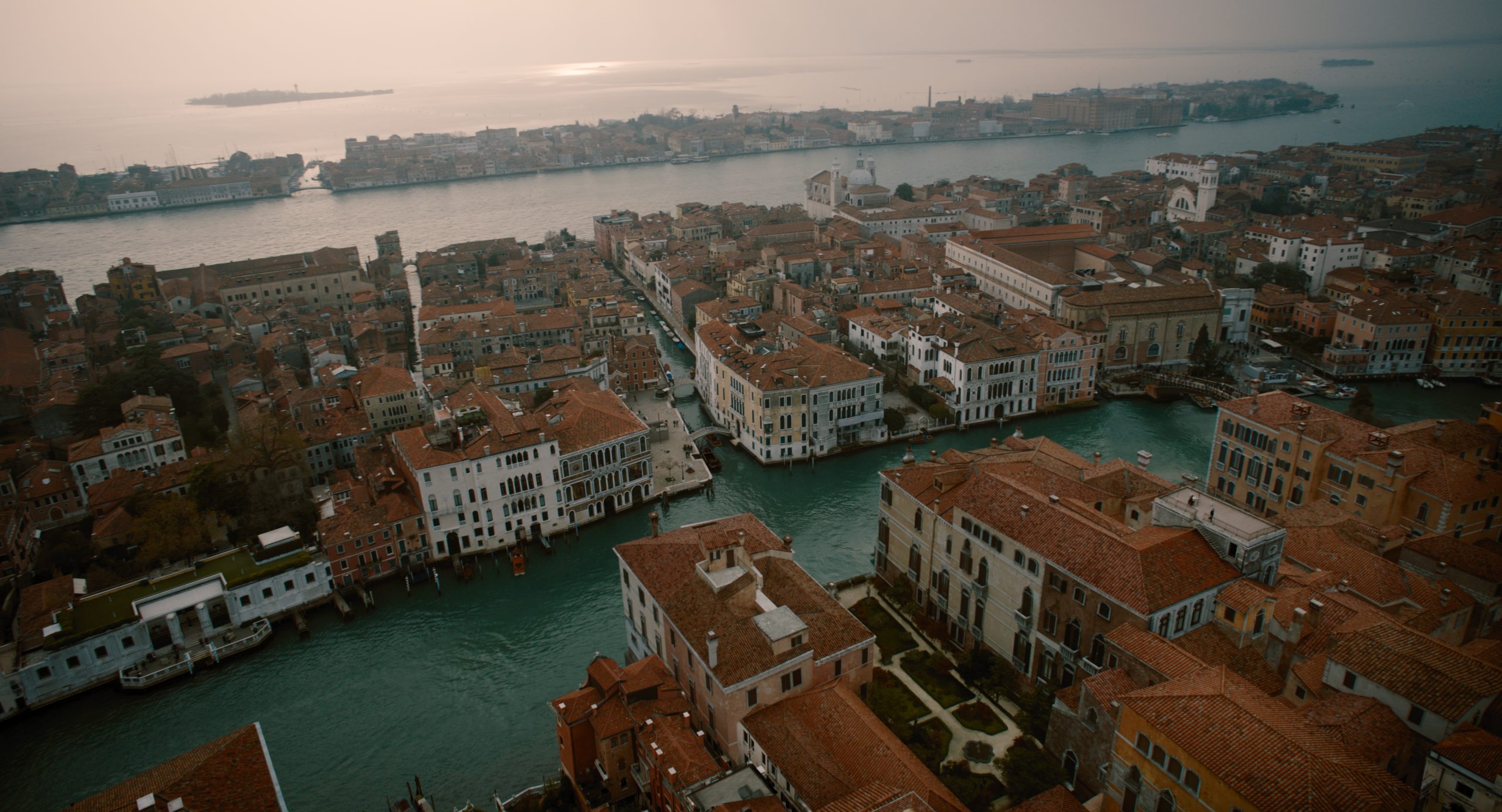
Adding a Sting to the Tale
One particularly intriguing scene involves a hallucination moment where water appears to spell the letter “M” on a wall, paying homage to Dial M for Murder film. This presented a conceptual challenge, as director Kenneth Branagh was aiming for a realistic yet ambiguous portrayal. As the story had previously established the dilapidated nature of the palazzo, with leaks caused by rain and to maintain the audience’s sense of uncertainty, the VFX team needed the water to appear like a natural leak, leaving viewers to question whether they are witnessing something real or a mere product of the character’s hallucination. The VFX team skilfully blended real 2D elements and 3D simulations to achieve the desired water effect.
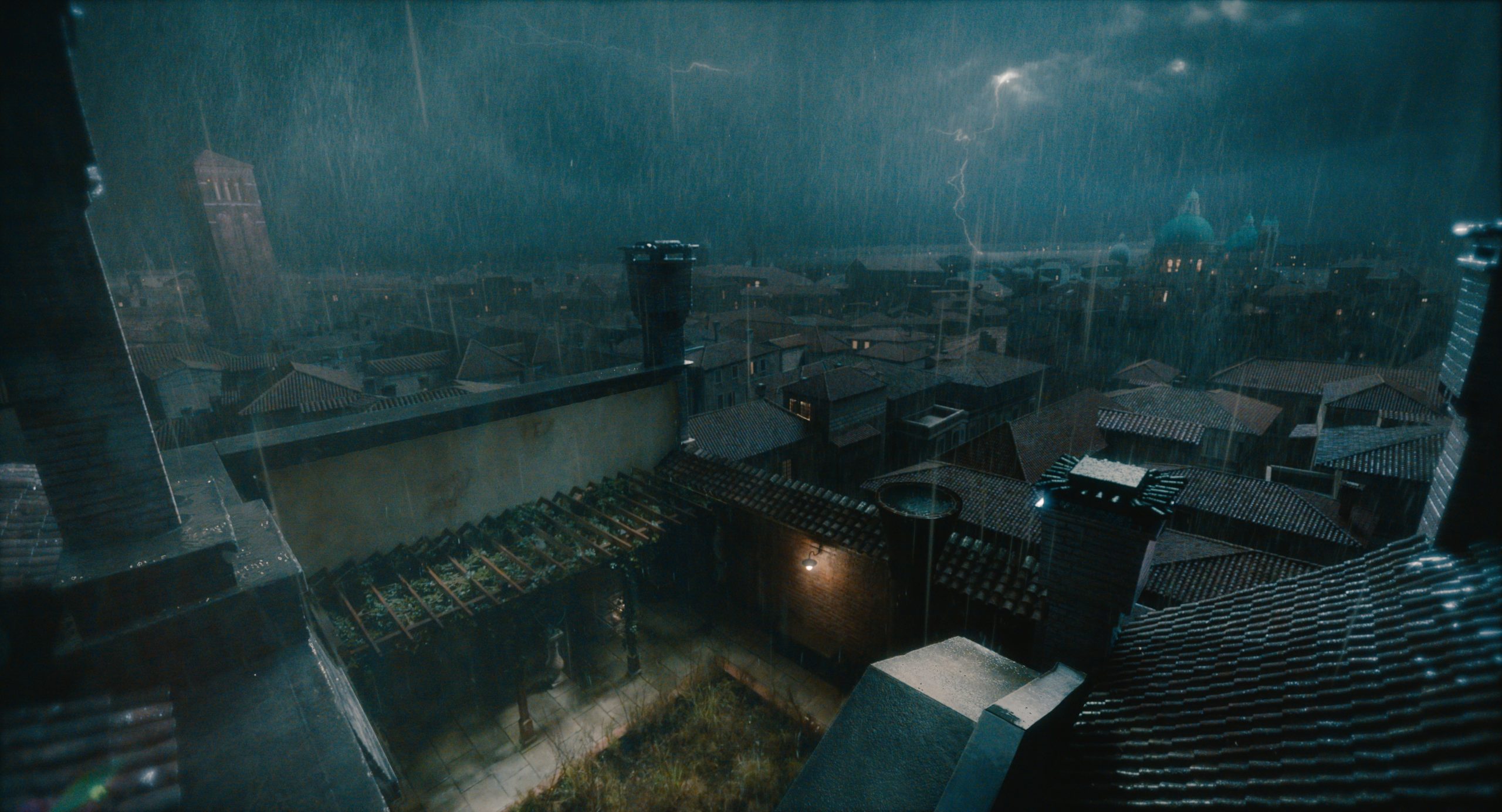
In another standout moment in the film, the characters find themselves terrified in the midst of a raging storm as a log breaks underwater and eventually smashes through the wall of the palazzo basement. As it crashes through the interior, it impacts a hidden CG skeleton, within which a CG hive of bees has nested itself.
CG supervisor Eric Senecal explains, “ The bee simulation was created by the FX team using Houdini’s particle-driven system, which meant that the bees follow a simple logic as they crawl across the skull’s surface. However, when the log impacts the skull, it triggers a change in their behaviour, making them move faster and more chaotically, with some flying off. The bees flying out of the skull’s mouth were animated individually to allow for easier artistic direction and simulation of their behaviour.”
The Takeaway: Enhancing Mood and Atmosphere
In conclusion, ‘A Haunting in Venice’ posed a unique challenge in seamlessly blending the mysterious with the tangible. The roles of Artemis Oikonomopoulou as a production supervisor and Suzie Askham as a VFX supervisor were to enhance the mood, support the storytelling, and enrich the overall cinematic experience and productions value of the tale with eerie visual effects. From cascading raindrops to spectral manifestations, each element the artists created played a pivotal role in bringing the supernatural aspects to life while preserving the film’s historical and atmospheric integrity.
A Haunting In Venice: Artemis Oikonomopoulou – Production VFX Supervisor – Cinesite
Cinesite Goes All Mysterious for Kenneth Branagh’s ‘A Haunting In Venice’